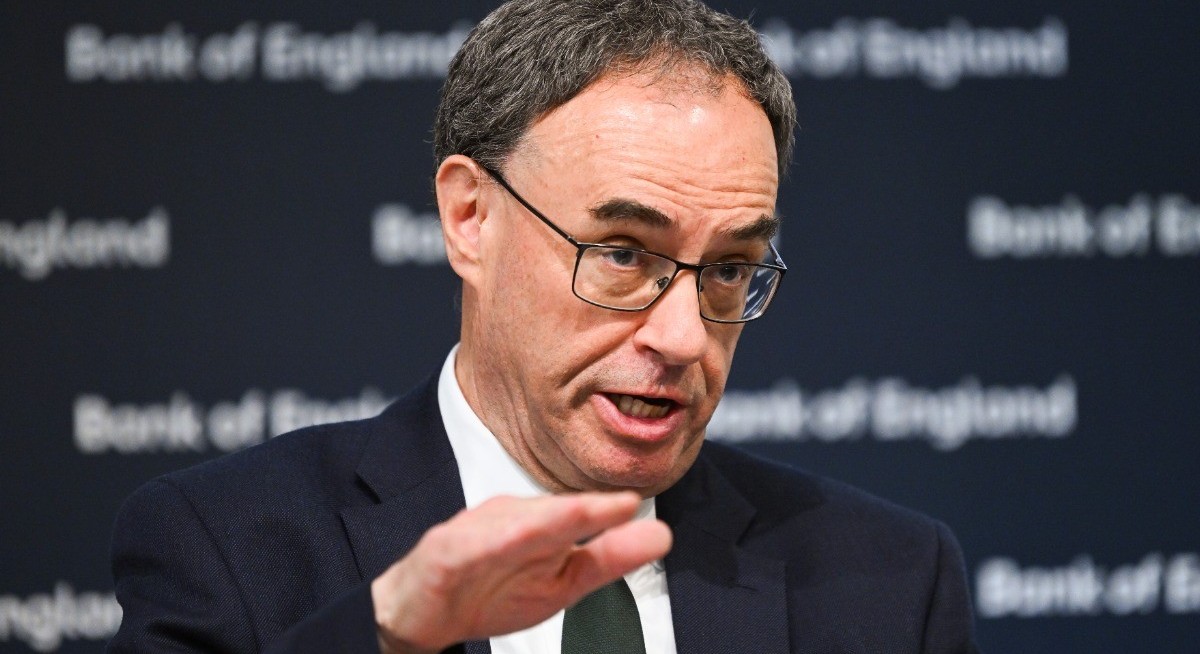(Nov 6): The Bank of England (BOE) held interest rates at 4% in a tight vote that laid the groundwork for a December cut.
Five members of the Monetary Policy Committee voted to leave policy unchanged, with governor Andrew Bailey swinging the decision, while four called for a quarter-point cut to 3.75%. The BOE said September inflation of 3.8% “is likely to be the peak”.
Minutes to the meeting showed Bailey was the most dovish of the officials who held rates. The governor edged closer to backing a reduction, judging that the risks to inflation had “moved down to become more balanced recently”.
“We still think rates are on a gradual path downwards, but we need to be sure that inflation is on track to return to our 2% target before we cut them again,” he said in a written statement.
The decision marked a break from the quarterly pace of easing the BOE has maintained since August 2024. In a media conference, Bailey said there was still a risk that inflation “could be sticky”.
However, the BOE also set the scene for a move in December, by which time the committee will have seen the Labour government’s crucial autumn budget later this month and two more rounds of inflation and jobs data.
See also: Maersk boosts global shipping outlook as China exports surge
While the decision was anticipated by markets, the BOE altered its guidance to state that rates are “likely to continue on a gradual downward path.” The word “careful” was dropped.
The pound trimmed earlier gains after the decision, trading around US$1.3075, as traders increased bets on monetary easing in the coming months. They are pricing about 50 basis points (bps) of interest-rate cuts by the middle of 2026 compared with 47bps before the decision. That boosted gilts, with the yield on two-year notes down 2bps at 3.78%.
“The narrow vote split and the more dovish tone in the minutes suggests the door remains open for a rate cut at the December meeting,” said Yael Selfin, chief economist at KPMG UK. “The data flow over the past few months has been positive, with inflation coming in below the Bank’s expectations and the labor market continuing to loosen.”
See also: Trump meets Swiss business leaders, orders more trade talks
Individual MPC members were able to explain the rationale behind their decisions in an overhaul of the bank’s communications. Bailey said that “upside risks to inflation have become less pressing since August,” and opted to hold in order to wait for more evidence.
He added that his position reflected a “forward looking Taylor rule” path for rates that the bank’s documents showed implied three more rate cuts over the coming year. Voting alongside Bailey were deputy governor for Monetary Policy Clare Lombardelli, chief economist Huw Pill and external members Catherine Mann and Megan Greene.
"The communication accompanying the Bank of England’s November decision suggests the central bank is likely to cut interest rates again as soon as February, earlier than our previous expectation for April. The budget, due on Nov 26, is likely to further strengthen the case for a move in early 2026. The risk is the disinflationary impulse from the likely tightening of fiscal policy later this month is greater than we anticipate, opening the door to a December move," says Dan Hanson and Ana Andrade, UK economists at Bloomberg Economics.
For the first time since joining the committee in 2023 deputy governor for Financial Stability Sarah Breeden split from Bailey, preferring to cut rates. She said “upside risks to inflation have diminished” while downside risks to demand “have become more prominent.”
Deputy governor for Markets Dave Ramsden and external members Alan Taylor and Swati Dhingra were the other doves.
The decision ended the run of five consecutive quarterly rate reductions established in August last year, as the committee sought to strike a balance between sticky inflation and softer recent data on wages and unemployment.
“The risk from greater inflation persistence has become less pronounced and the risk to medium-term inflation from weaker demand more apparent, such that overall the risks are more balanced,” the Monetary Policy Report published alongside the decision said.
To stay ahead of Singapore and the region’s corporate and economic trends, click here for Latest Section
Budget looms
The rate decision comes just weeks before Chancellor of the Exchequer Rachel Reeves unveils a budget at which she is expected to announce big tax rises that may hit growth and bear down on inflation. The BOE based its forecasts and policy decision on the fiscal settings in place from March, so capture none of the anticipated budget measures.
Based on those assumptions, the BOE’s updated forecasts show inflation falling to 3.1% at the start of next year and settling around the 2% target from the second quarter of 2027 onwards. Unemployment is expected to peak at 5.1% in the second quarter, up from 4.9% as of the August forecast. The bank revised up its growth forecast for this year to 1.5% from 1.25% and left its 2026 and 2027 outlooks unchanged.
Responding to the BOE’s decision, Reeves welcomed the slight reduction of its inflation forecast for the current year. The chancellor repeated her commitment to bring down the cost of living in her budget on Nov 26.
At 4%, UK rates are the equal highest of the Group of Seven economies alongside the US but the Federal Reserve is expected to reduce policy more quickly. Reeves said this week the current level is “a constraint on business borrowing and a burden on family finances.”
Uploaded by Felyx Teoh




